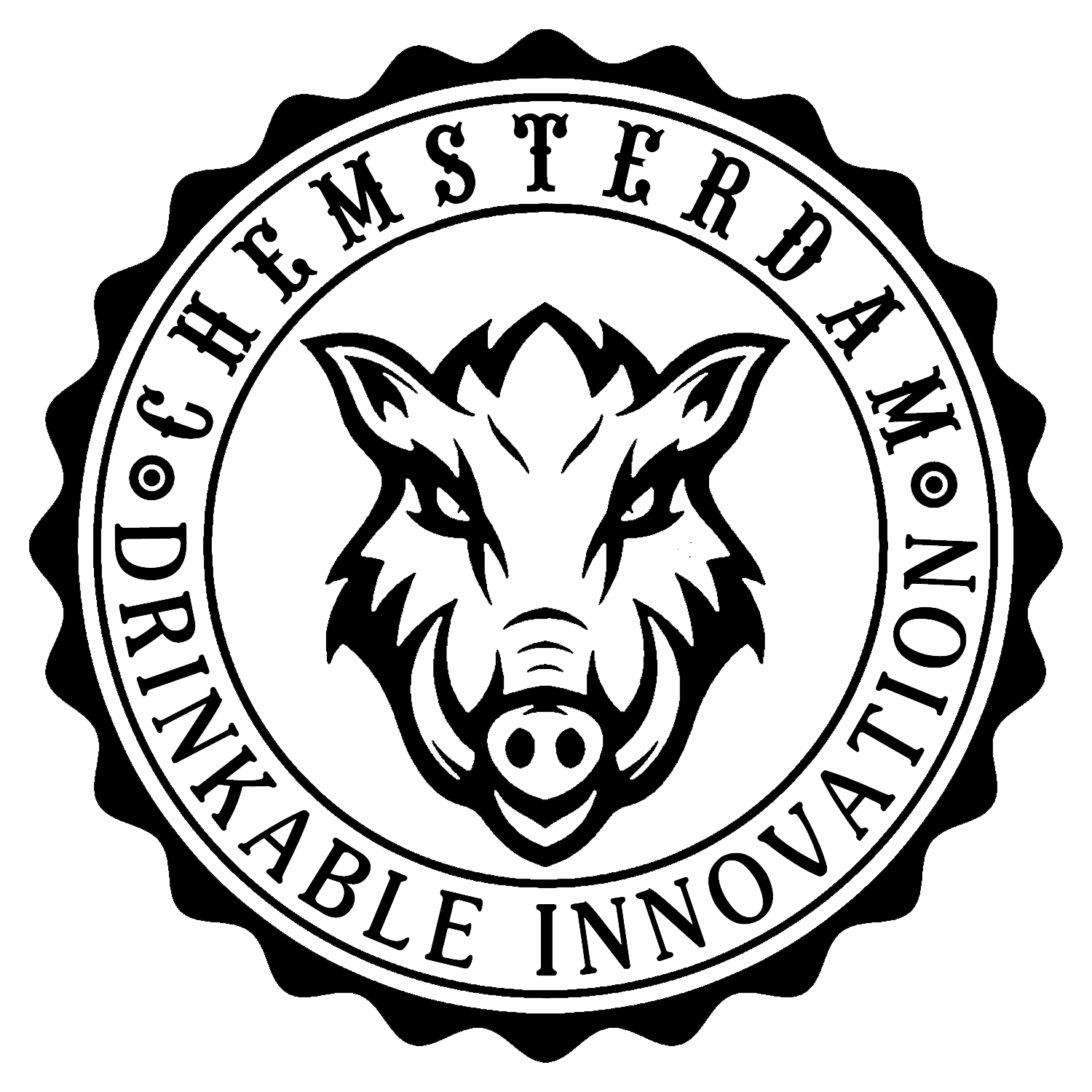🐼 x🍹Baijiu Cocktail 006: Song of Ice and Fire 冰与火之歌

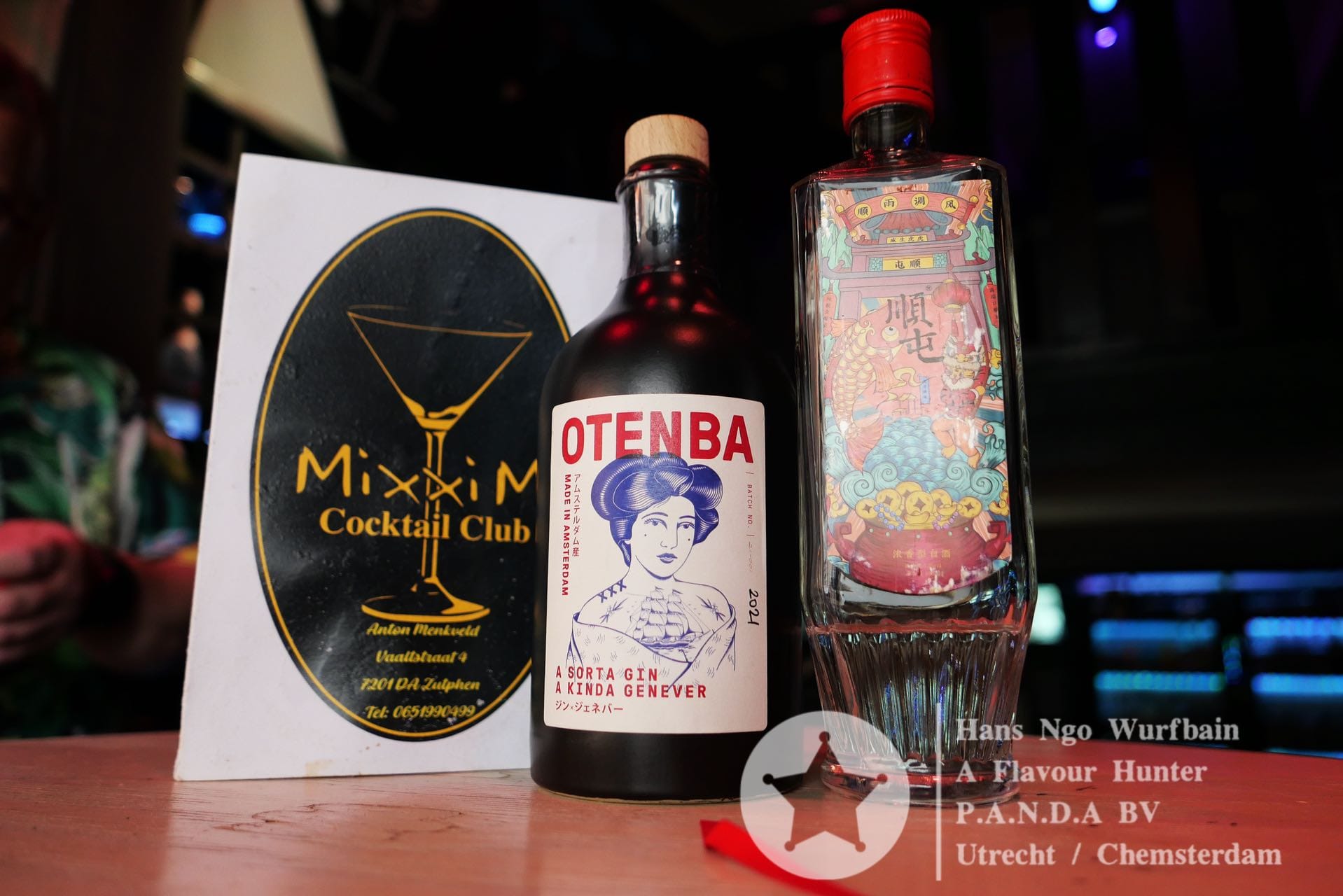
Preface
First, I am pleased to announce that Anton Menkveld of the Zutphen MixxiM Cocktail Club has created the sixth Baijiu cocktail recipe collected by P.A.N.D.A in the Netherlands, using Shuntun Baijiu from China and Otenba by the renowned Dutch distiller Monique. Today's story will be a bit longer because I have uncovered a lot of interesting information.
Anton Menkveld and MixxiM
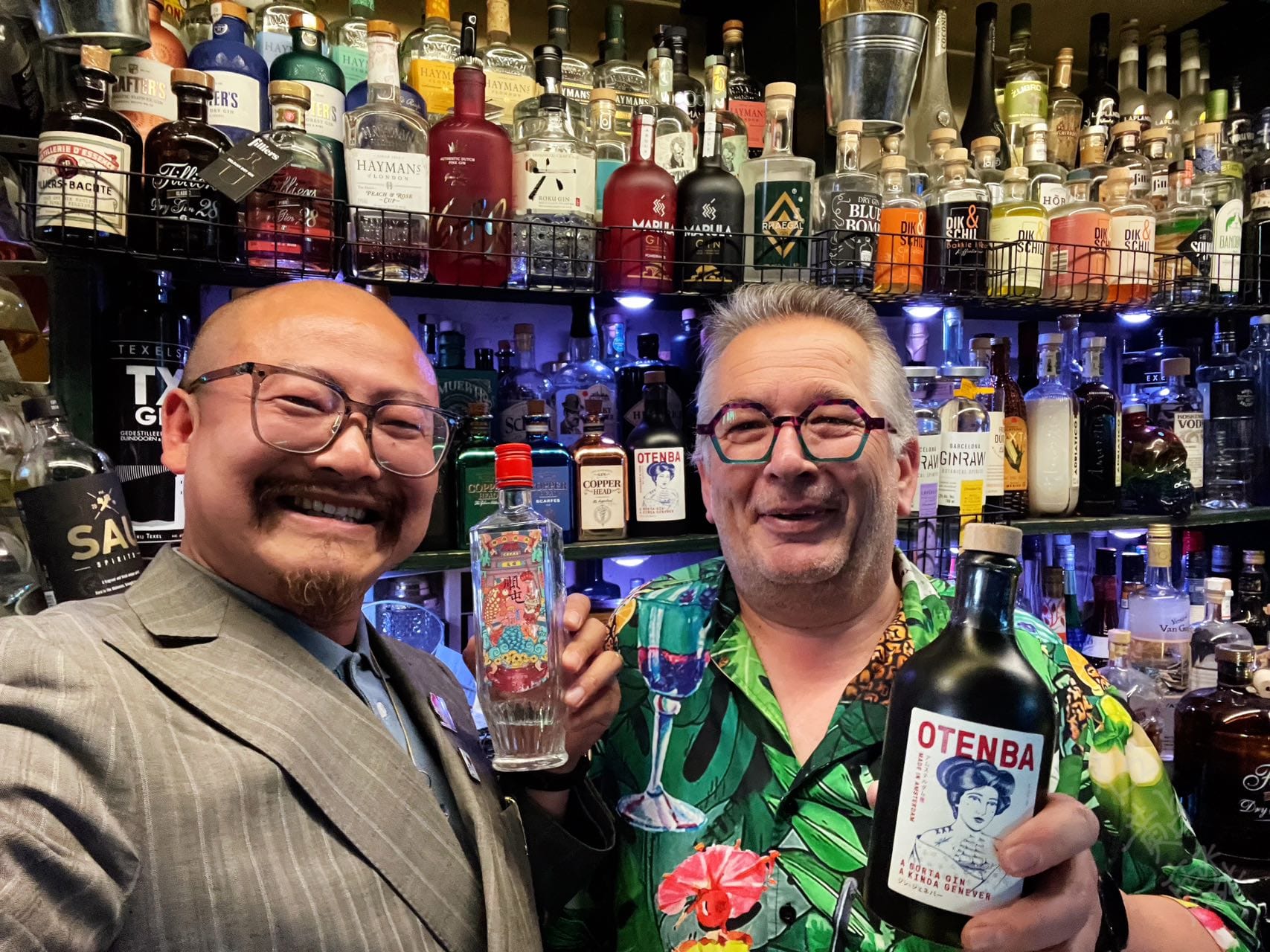
I first met Anton at the Netherlands Bartender Club annual meeting at Belly of the Beast in Amsterdam. It seemed like everyone knew him, but I couldn’t recall where I had seen him before. After the meeting, I approached Anton, who greeted me warmly, shook my hand, and told me his name. He was in a hurry to leave, and I asked him where he was going. He said he was returning to Zutphen. I knew Zutphen, a city with less than fifty thousand residents and only one liquor store—by Chinese standards, it’s smaller than a residential community. Could there really be a cocktail bar there? While I was still pondering, Anton said to me, "Contact me when you are around Zutphen." Then, he left.
During our first conversation, he had only 3 sentences:
- I am Anton from Mixxim.
- I am returinng to Zutphen.
- Contact me when you are around Zutphen.
Anton was born in the early 1960s and worked in the textile industry and textile sales for many years. However, he has been interested in mixed drinks since he was young and started making cocktails for himself before he was twenty. Through hard work, Anton bought a residence in Zutphen in 1989, with his home upstairs and his reception area downstairs— Now it is the MixxiM Cocktail Club. The MixxiM Cocktail Club was established on November 8, 2013. Over the eleven years, it has hosted numerous cocktail workshops and weathered the COVID pandemic from 2020 to 2022. Zutphen’s population is small, and it’s not as lively as cities like Amsterdam or Rotterdam, so the business isn’t as booming as in big cities. The only reason Zutphen still has a cocktail club is Anton's love for cocktails.
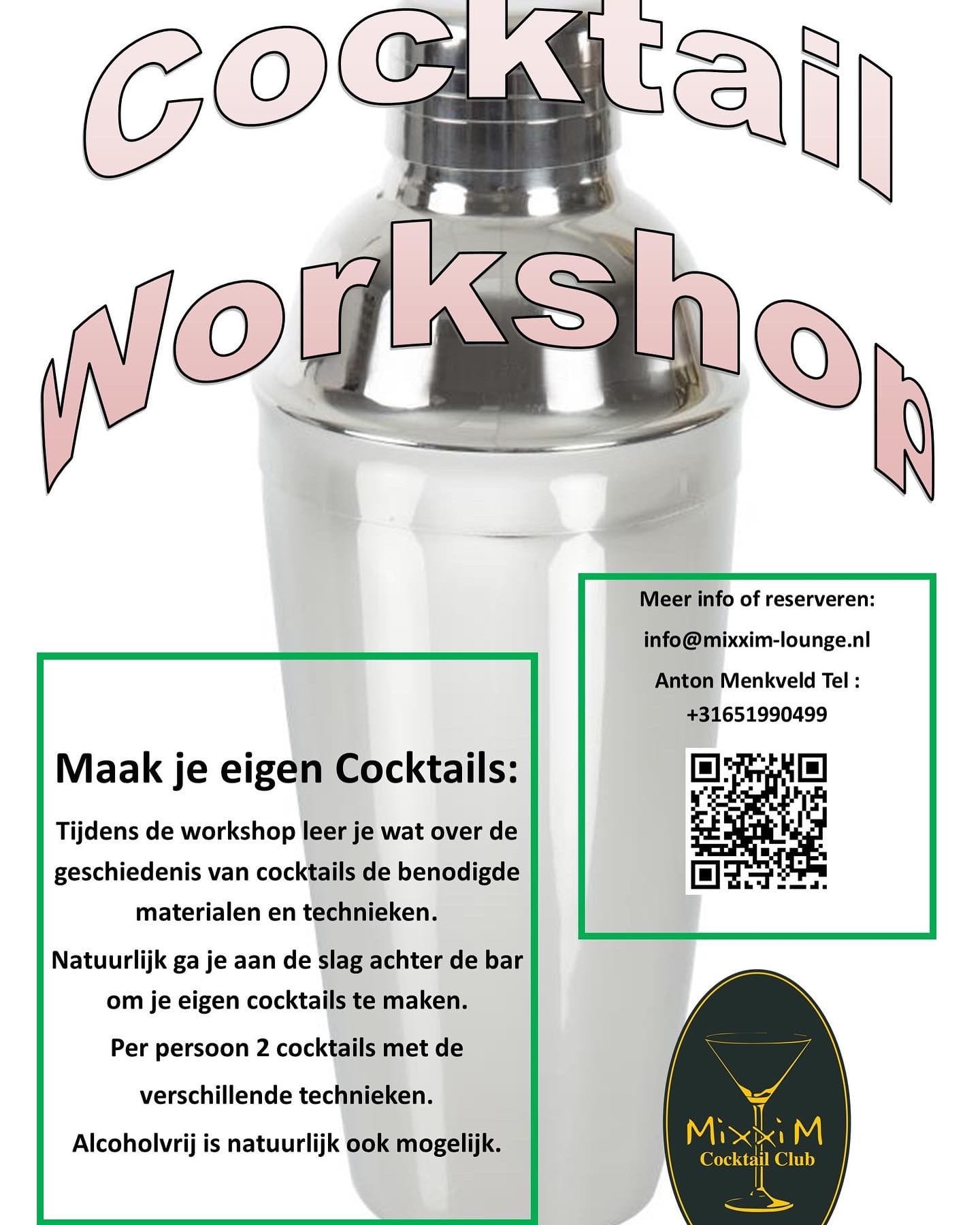
If it were me, I might have rented out the space for more profit and peace of mind. But Anton persisted with the cocktail club.
MixxiM Club has three areas:
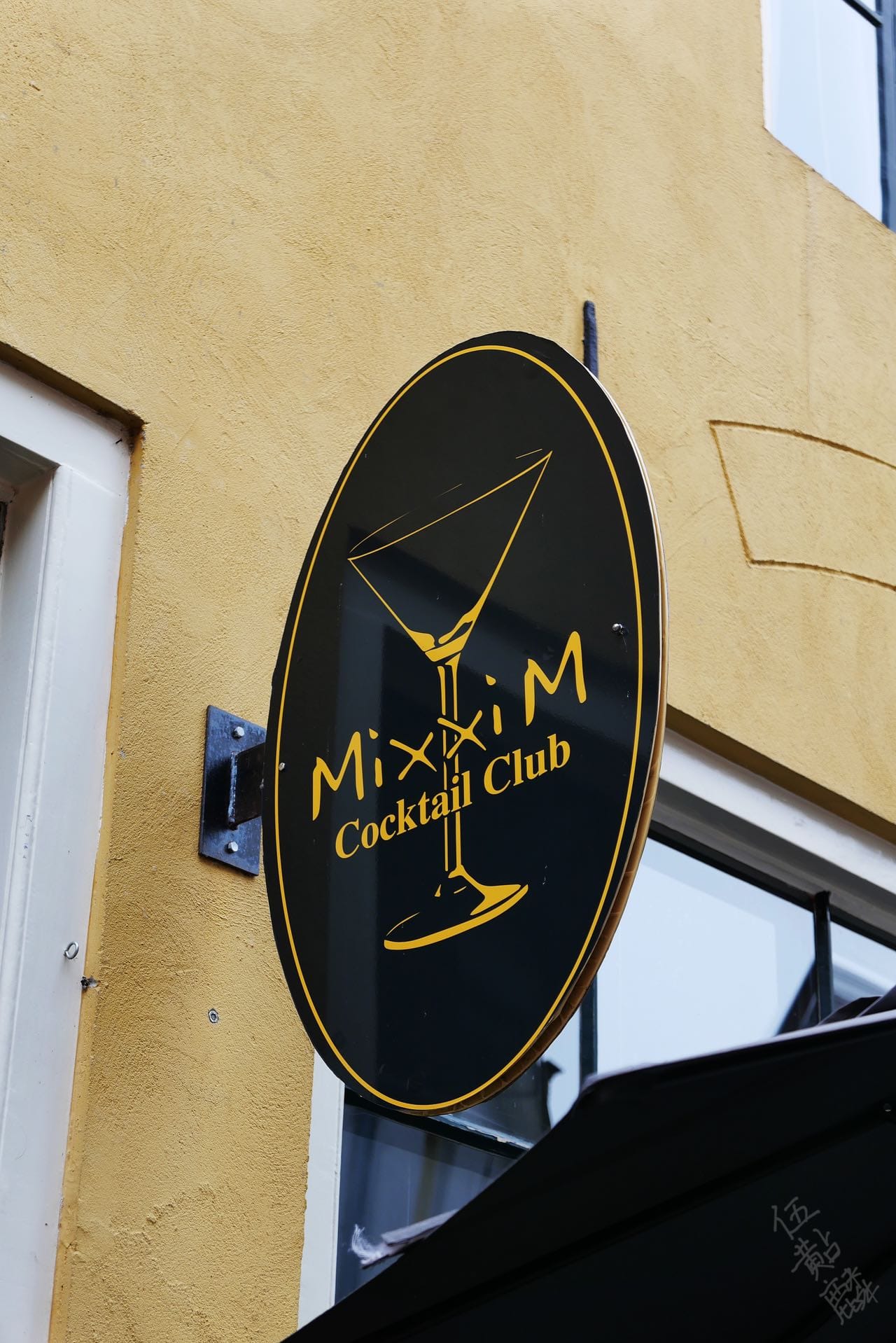
1.Outdoor Area: Can accommodate around 20 people. Ideal for afternoon tea, chatting, reading, etc.
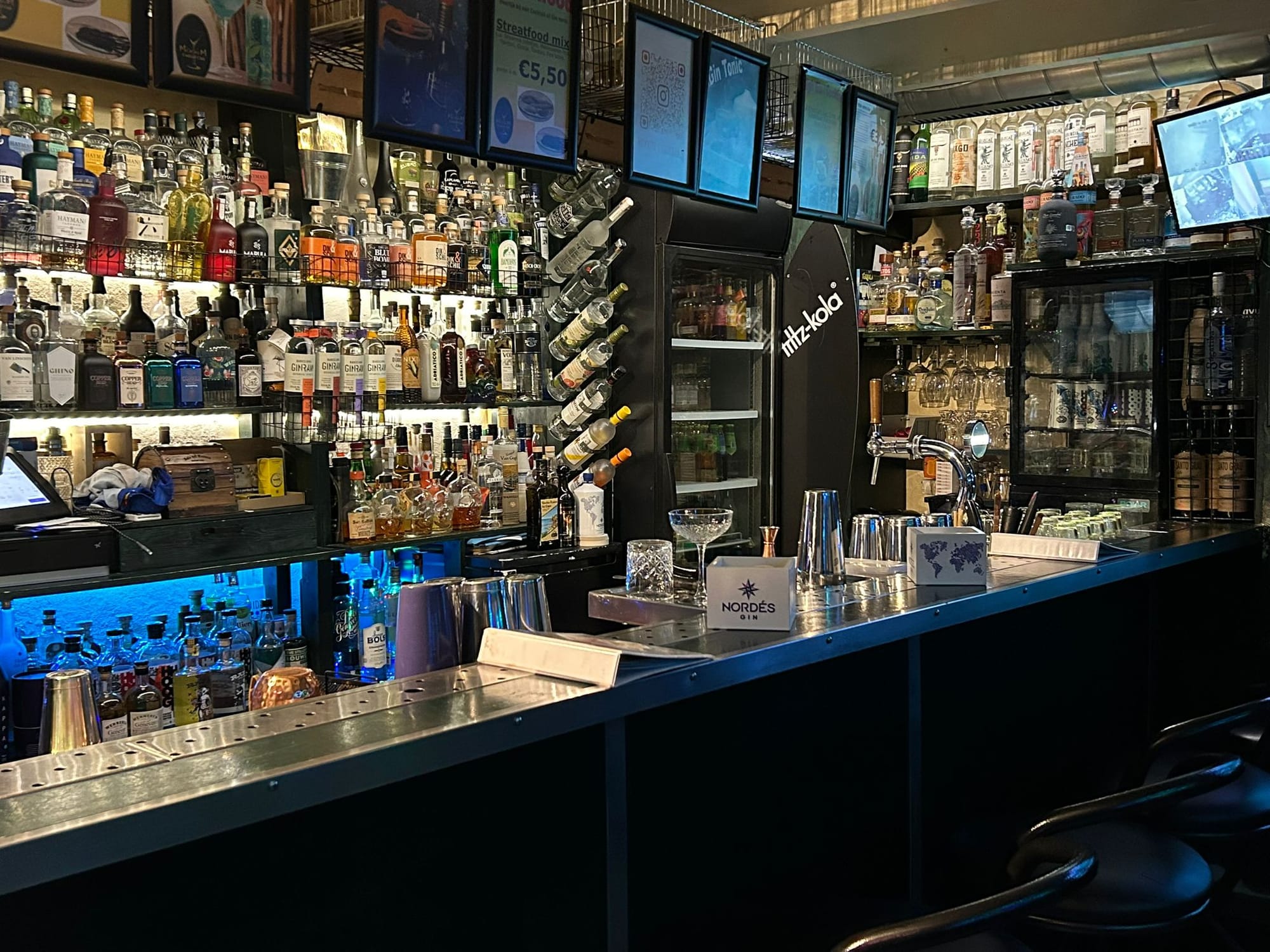
2.Semi-basement Hall: Can accommodate around 20 people. You can watch Anton mix drinks, with walls featuring built-in cabinets protected by nets, storing a large variety of spirits and liqueurs.
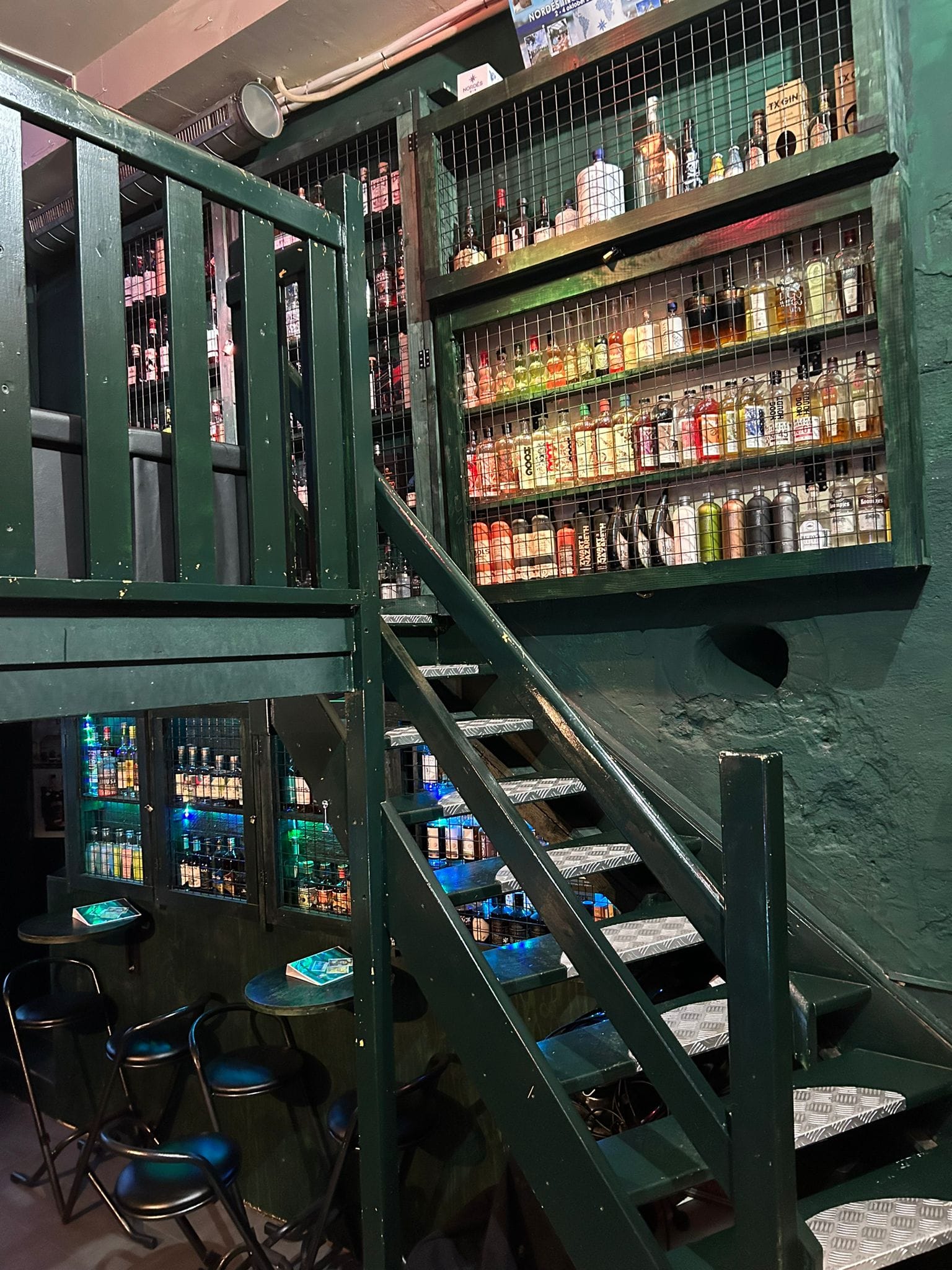
3.Loft: Can accommodate around 10 people. This area has a mini bar prepared by Anton for those attending cocktail workshops. Anyone can book a spot, learn about cocktails and mixing techniques, and make their own cocktails with Anton's help. The workshop attendees are not just locals but also people from other places, including Maastricht and Groningen.
Zutphen
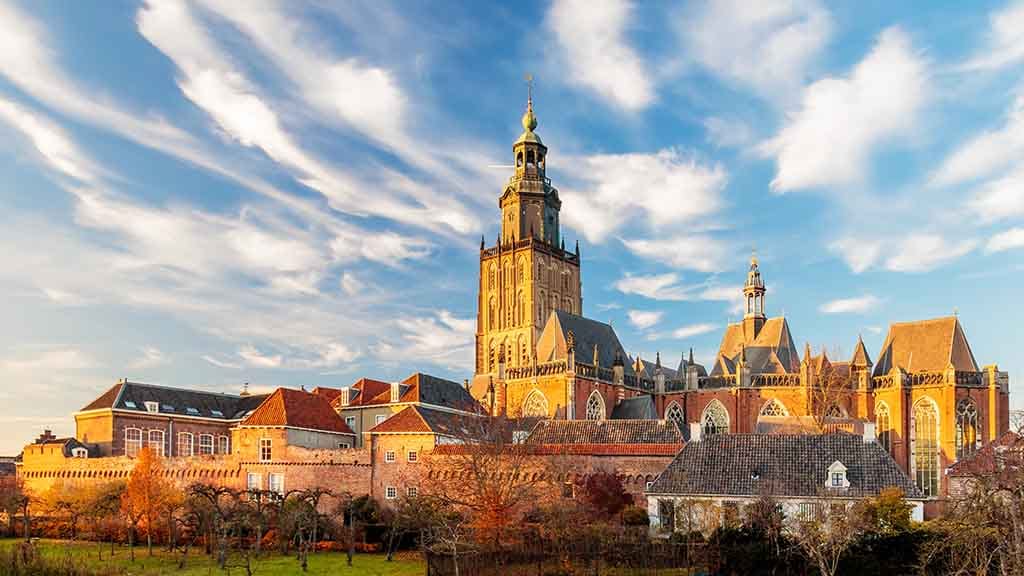
I am a person who likes to dig into details, known in China as "breaking the pot to get to the bottom." Our Baijiu hasn’t been sold in Zutphen yet, so I needed to visit again, but before going, I had to do some research. Of course, I also wanted to know why someone would open a cocktail club in this city.
Zutphen was originally a settlement established by the Germans around the third century AD. As it is located at the confluence of the IJssel and Berkel rivers, it holds strategic significance. It gradually became the administrative center governed by the Count of Zutphen. Zutphen's nearly 2000-year history is truly impressive:
- St. Walburgis’ Church, built around 1050, a Roman collegiate church, still has a bell tower in use, with six large bronze bells ringing daily.
- The Bourgonje defensive tower, built in 1457, is where Dutch theologian and philosopher Johannes Florentius Martinet wrote "Catechism of Nature". "Catechism of Nature" and its sequel "Little Catechism of Nature for Children" are popular science references about nature, at least as known in the eighteenth century. For Reverend Johannes Florentius Martinet (1729-1795), it was a nature that constantly showcased God's greatness and wisdom. Martinet used dialogue in both works, the most popular means in the eighteenth century to convey knowledge. Through questions and answers between a student and a master, Martinet managed to present a vast amount of scientific information to the reader in plain spoken language.
- Zutphen has nearly 400 national monuments and over 500 local monuments, making it one of the most important and well-preserved historical cities in the Netherlands.
A few short sentences cannot fully capture Zutphen; it awaits your curiosity and exploration.
Hans Visits Anton at MixxiM in Zutphen
From Utrecht, I needed to take an NS train to Deventer and then transfer to Zutphen, it takes about 1 hour. It’s about a 10-minute walk (over 600 meters) from Zutphen station to MixxiM Cocktail Club, passing through the old town’s shopping streets and various historic buildings. Of course, I used my usual bike and train combo. When I arrived at MixxiM, Anton was already sitting on a bench at the club’s entrance, waiting for me. I locked my bike to the iron railing, and Anton poured me a glass of water at the bar.
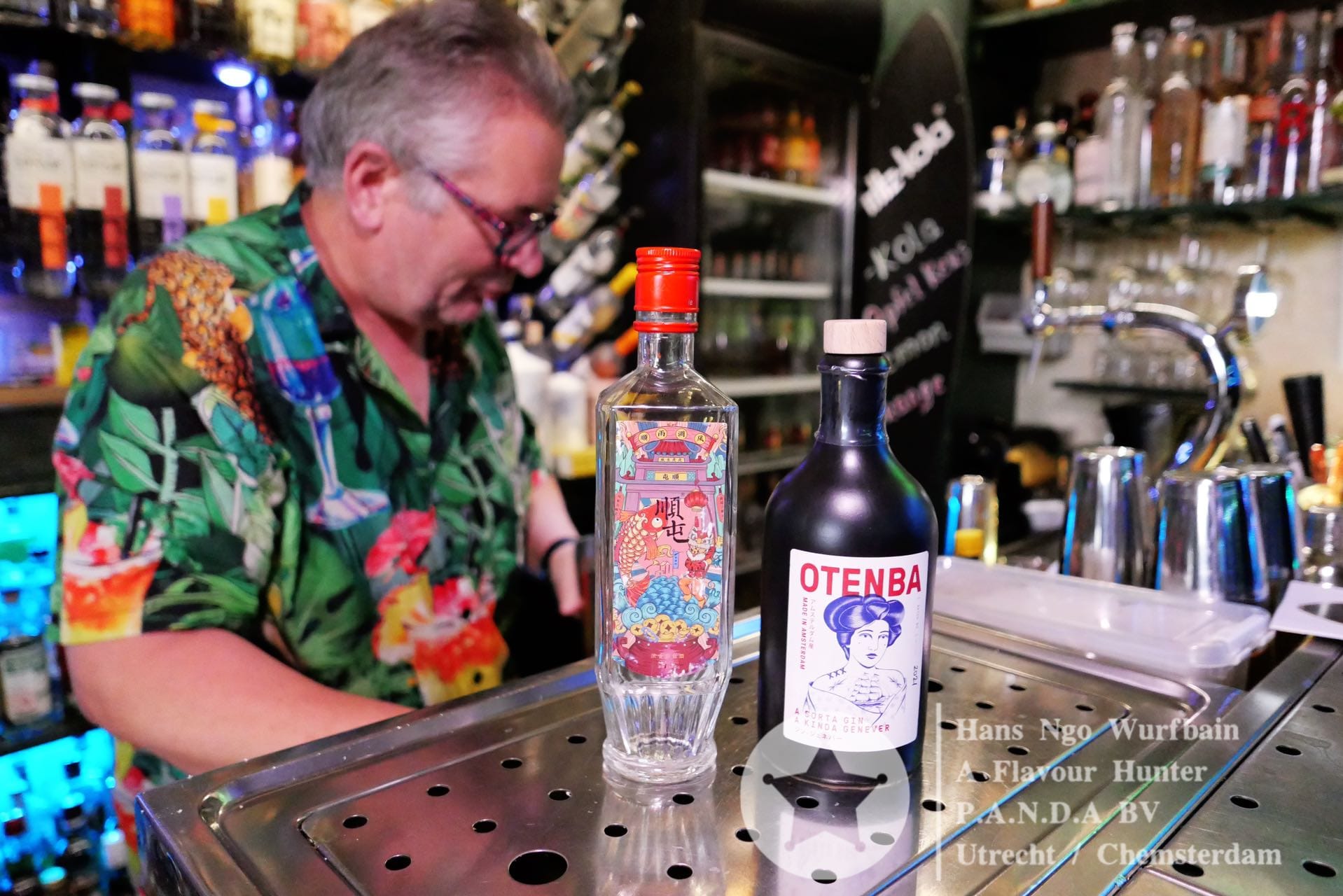
After spending a long time in the Netherlands, I’ve become less like a traditional Chinese person and more straightforward because I realized that life is too short to beat around the bush. It’s best to express things clearly and act accordingly. Of course, Anton and I both knew my purpose for visiting: to ask Anton to create a signature MixxiM cocktail using Shuntun Baijiu and Otenba Gin. I hoped that this cocktail would mark Zutphen’s significant place in the history of Baijiu’s journey beyond China.
In the Netherlands, there’s no need for unnecessary words when working with people, which is what I appreciate most. Anton walked behind the bar, and I sat on the bar stool, facing him. I placed the two bottles from my backpack on the bar. He was familiar with Otenba, as it’s a creation of the Dutch distillation goddess Monique, and even had a bottle of Otenba on his liquor wall. So, he only brought out a nosing glass, poured some Shuntun Baijiu, examined it, asked a few questions, took a small sip... He stared into the distance thoughtfully, "Hmm, wow, this flavor is interesting! It’s quite challenging for beginners!" He hadn’t even finished speaking before he started mixing the Baijiu and gin, with two measuring cups... Anton’s movements weren’t particularly fast, but they were very smooth, and mostly importantly without any hesitation. He also asked me about the raw materials for Baijiu. I answered: Baijiu is a strong spirit made from a mix of grains, naturally inoculated with qu (a fermentation starter), and solid-state fermented in pits before being distilled using a traditional Chinese distillation apparatus called a zeng. The aging process uses unglazed clay pots, ensuring no external colors or aromas are added; all the flavor comes from the esters formed during fermentation and aging process.
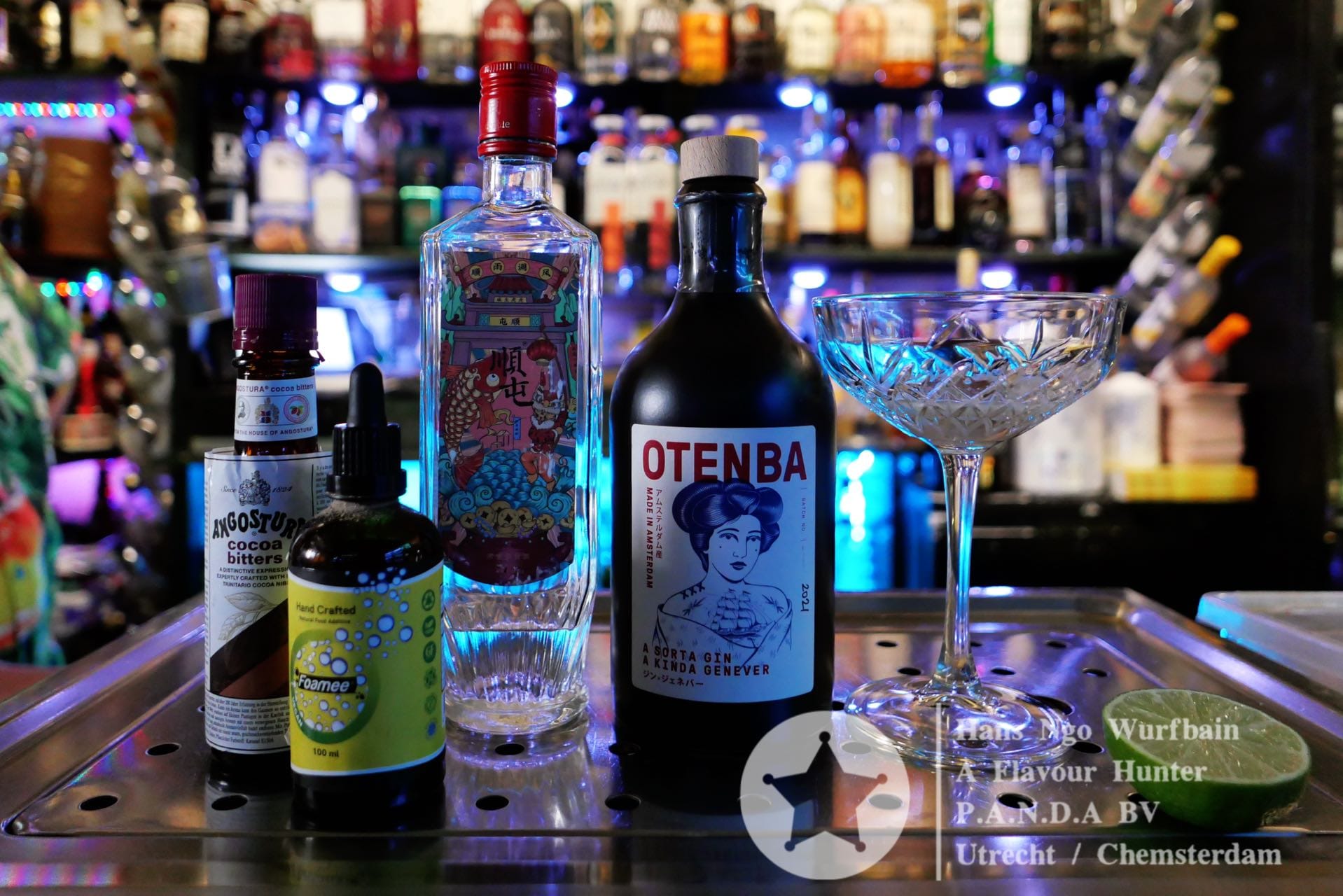
Just as I finished introducing Baijiu, Anton had already made the Baijiu cocktail and placed it in front of me. The cocktail and its ingredients were laid out simply. I eagerly took some photos and then picked up the glass.
Observation: The Baijiu and gin mixed with lime juice appeared slightly cloudy, with a faint yellow-green color and a layer of foam on top, garnished with a slice of dried lemon.
Aroma: The cocktail smelled elegant, with the fruity notes of Baijiu blending with the other spices of Otenba, giving a sweet and layered aroma.
Taste: This cocktail was rare in that it contained no syrup, retaining the original flavors of Baijiu and gin without the spiciness of Baijiu. It was refreshing upon entry. A hint of bitters and the lime zest oil added a slight bitterness, but it quickly turned sweet after swallowing, similar to chewing green olives: initially bitter but leaving a slightly tart sweetness in the aftertaste.
Many people describe the warmth of Baijiu, which comes from some esters and alcohol in Baijiu. This cocktail retained all the flavors of Baijiu and gin without trying to mask anything with fruity syrup. Suitable for:
- Anyone needing to control sugar intake;
- Those who enjoy exploring flavors, typically intermediate to advanced cocktail enthusiasts. For cocktail beginners, it’s a great way to understand Baijiu’s flavor profile through a Baijiu cocktail.
Given Otenba’s coolness and Shuntun Baijiu's heat, this cocktail authentically presents the "Song of Ice and Fire."
Cocktail Recipe
Basic Information
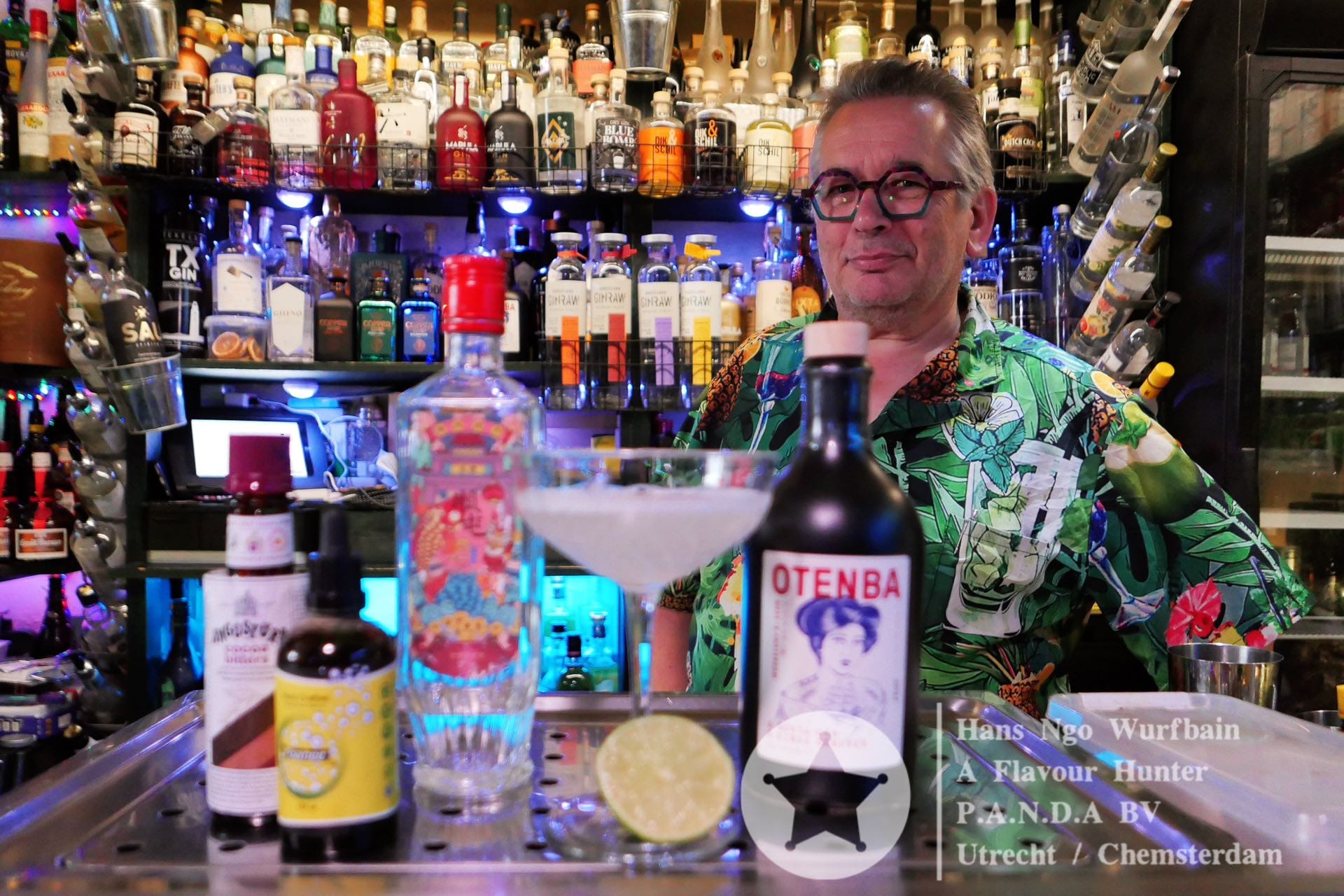
- Name: Song of Ice & Fire (冰与火之歌)
- Creator: Anton Menkveld, Mixxim Cocktail Club, Zutphen, a member of NBC.
- Drink Type: Alcoholic Cocktail without Syrup
- Base Spirits: 1. Shuntun Baijiu; 2. Otenba Genever
- Serving Method: Shake and strain to remove ice, serve in an iced glass
- Garnish: A slice of dried lemon
- Standard Glass: Coupe
Recipe:
- Shuntun Baijiu (顺屯白酒) 30ml
- Otenba 30ml
- Angostura Cocoa Bitters 3 Dashes
- Foamee 3 Drops
- Green Lime Juice 15ml
- About 36% ABV
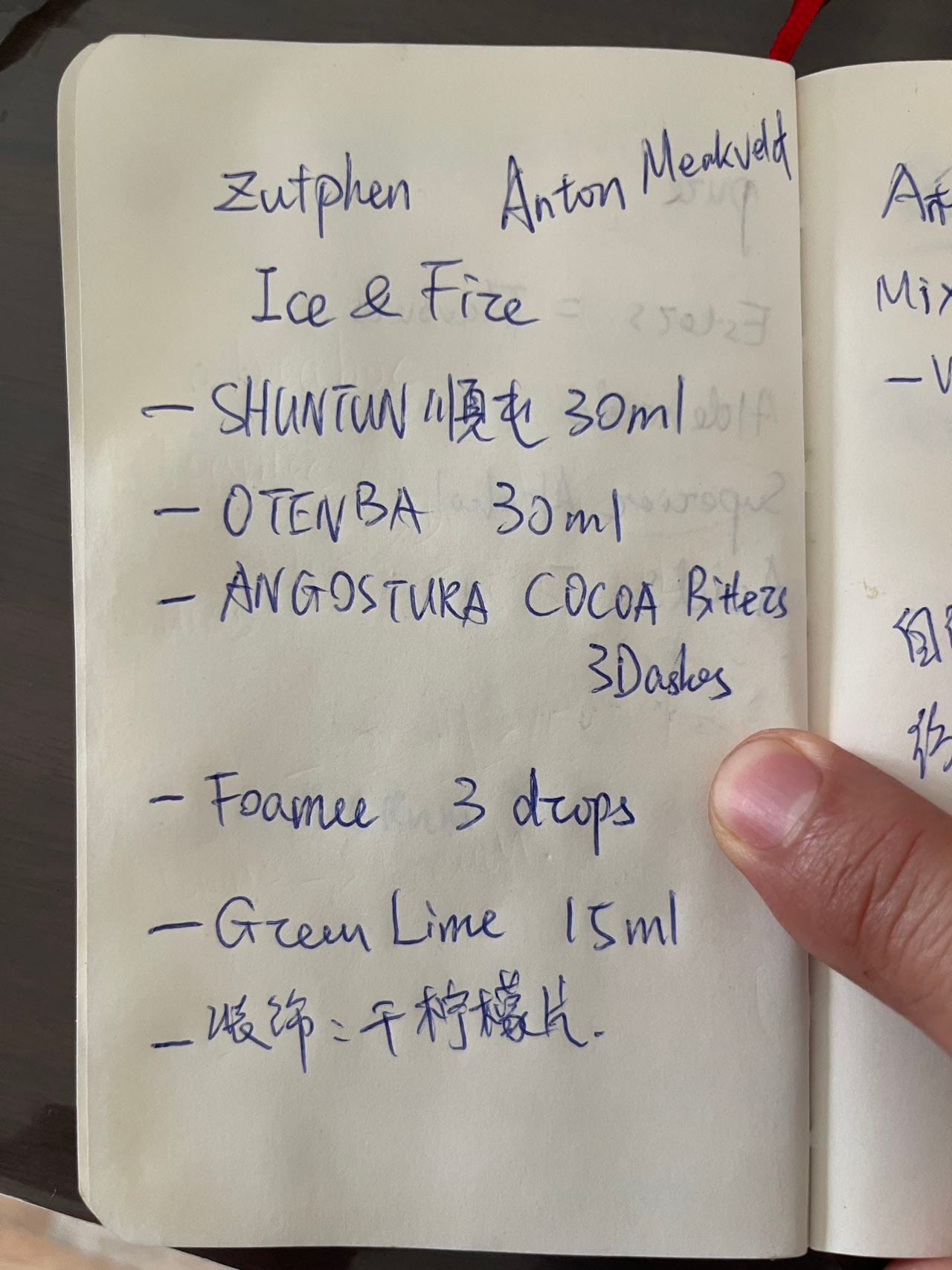
This is a content created for flavor hunters by a flavor hunter. If you want to know more, or recommend a bar to us, please feel free to contact us at hi@chemsterdam.com
Please check SHUNTUN Baijiu in the local liquor store, and try the cocktails in the local cocktail bars.
Follow us:
Insta: hansngo.panda
Facebook: Hans Ngo
